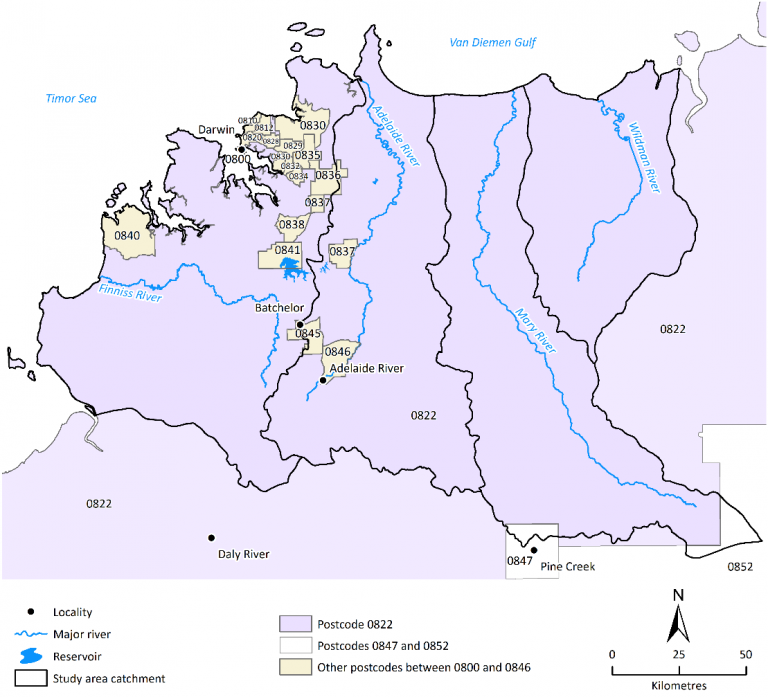
Data from the Business Longitudinal Analysis Data Environment (BLADE) were used in the Jobs and Growth case study. The BLADE comprises information from various sources on all active businesses in Australia from 2001-2002 and is curated by the Australian Bureau of Statistics (ABS). The BLADE enables administrative data and ABS survey data to be linked using the Australian Business Number (ABN) from the ABS Business Register (ABS 2015). Data items used in this study were taken from Australian Taxation Office datasets, specifically Business Activity Statements (BAS) and Pay as you go (PAYG) statements. More detail on methods is provided in the accompanying Methods Report (Stokes et al. 2019).
All available years were investigated in this study, with the latest available data from 2015-16. Businesses with a mailing address in postcodes between 0800 and 0846 were included which by their nature do not precisely map onto the core study area (Figure 1).
Figure 1 Postcodes that are entirely or partially contained within the Darwin study area
Businesses defined as ‘complex’ – those that operate under multiple Management Units – were excluded from the study. Australian and New Zealand Standard industry Classification (ANZSIC) codes were used to define the industry sector of each businesses, and sub-classify businesses in the ‘Agriculture, Forestry and Fishing’ (Agriculture) sector (ABS 2013).
Turnover and employment in the form of full time equivalents (FTE) were aggregated for each financial year within Agriculture and across all other industries, and mean and median capital purchases were calculated per year for agricultural businesses. Business lifespan was calculated based on the first and last year the business reported turnover. The figures for Agriculture were also broken down by industry subdivision, class, and group. To allow for inflation in the economy and not simply changes in cost of living, Gross Domestic Product indexes rather than a Consumer Price Index were used to deflate turnover figures, while capital purchases were adjusted using Gross Fixed Capital Formation (ABS 2018). A linear regression of log of FTE on log of wages with year and industry sector as controls was used to impute missing FTE values for businesses that reported wages. Three-year moving averages were used for observing industry trends in turnover and FTE figures as well as number of businesses. Among agricultural businesses, between 34% and 41% of businesses included in BLADE data each year never reported turnover. Only those businesses that reported turnover were included in business counts.




